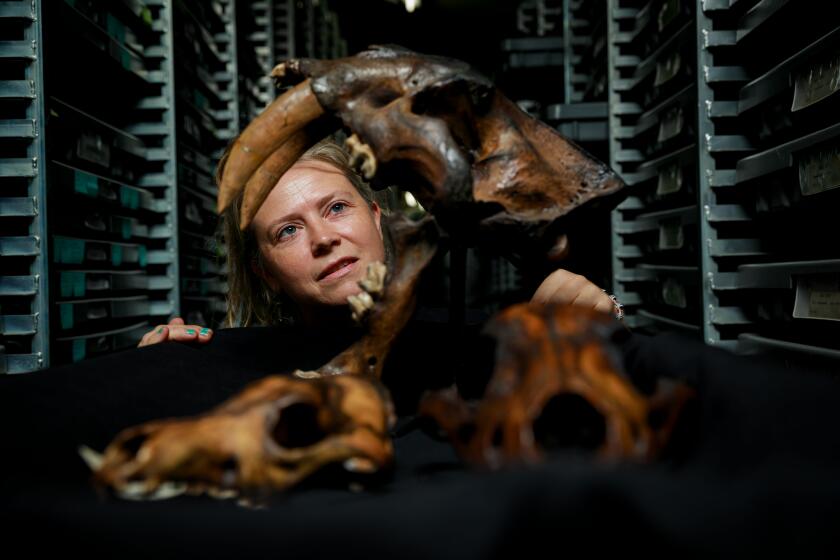The La Brea Tar Pits are full of mysteries. Here are three of the most puzzling
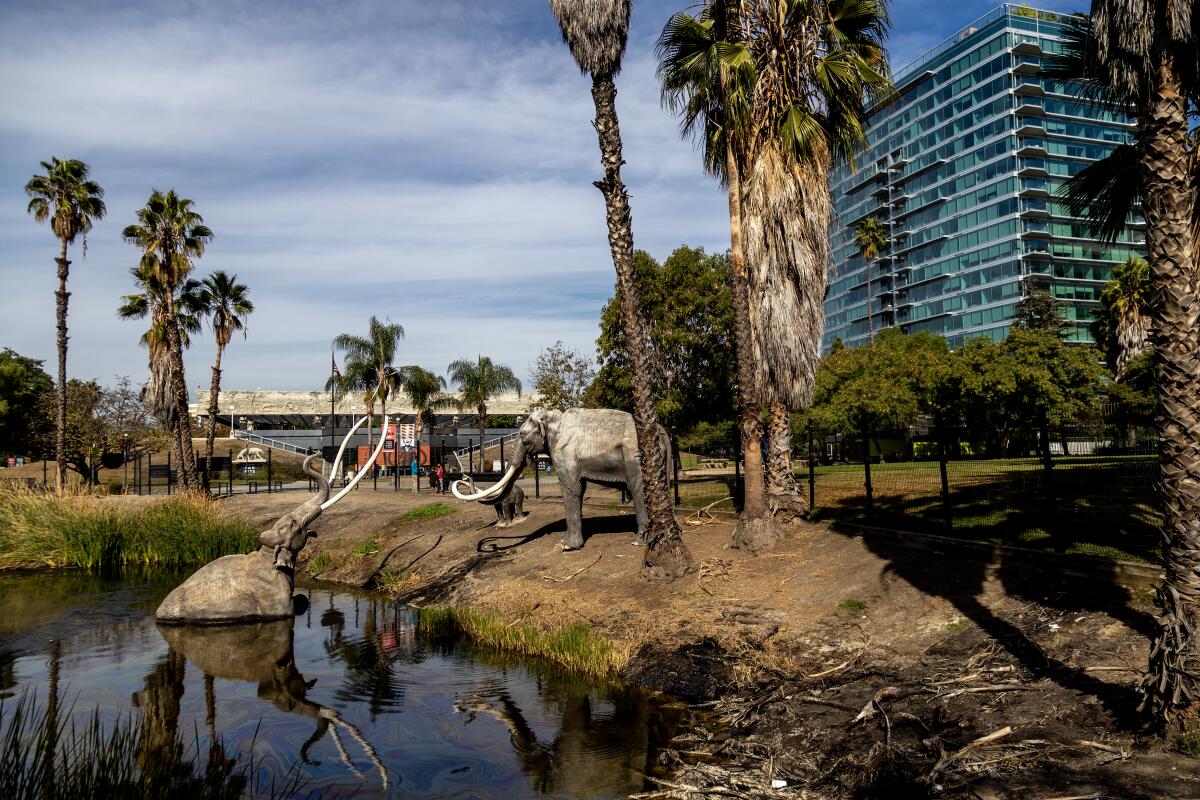
- Share via
Last year, we began inviting readers to send us their pressing questions about Los Angeles and California.
Every few weeks, we put the questions to a vote, asking readers to decide which question they would like to see answered in story form.
This question, posed by Ricky Fulton, was included in one of our latest reader polls: What are the La Brea Tar Pits? Is it a bunch of bubbling tar with dinosaur bones sticking out?
You can vote in our next reader question poll here. Catch up on previous stories written as part of this project here.
There’s more than meets the eye — and nose — at the La Brea Tar Pits.
For those who don’t know, the La Brea Tar Pits are an internationally recognized geological heritage site, located in the middle of Los Angeles. The site is known for its many fossil quarries (referred to as “pits”) where animals, plants and insects have gotten stuck and preserved in asphalt over the last 50,000 years.
A reader asked why L.A.’s recognizable skyline — with skyscrapers such as the Wilshire Grand Center and U.S. Bank tower — developed roughly 15 miles from the Pacific. We have answers.
To scientists, they’re a priceless, unique treasure trove of information that allows us to better understand what ancient life was like in Los Angeles.
“The type of science that you can do at La Brea Tar Pits is stuff that you can’t really do at any other paleontological site in the world, just because we have so many fossils, and they’re so well preserved,” said Emily Lindsey, associate curator and excavation site director.
Within the odorous goo — a curiosity for locals, tourists and schoolchildren on field trips — more than 3.5 million fossils have been discovered.
To answer Fulton’s question right off the bat, here’s one thing they haven’t found in the pits: dinosaurs.
That’s right — this is an Ice Age fossil site, and experts haven’t uncovered any remains of T. rexes, triceratops or other non-avian dinosaurs.
Although the La Brea Tar Pits are short on dinosaur fossils, they’re chock full of fossils from legendary Ice Age animals. The two most commonly found large mammals? Dire wolves (shout out to all the “Game of Thrones” fans) and saber-toothed cats.
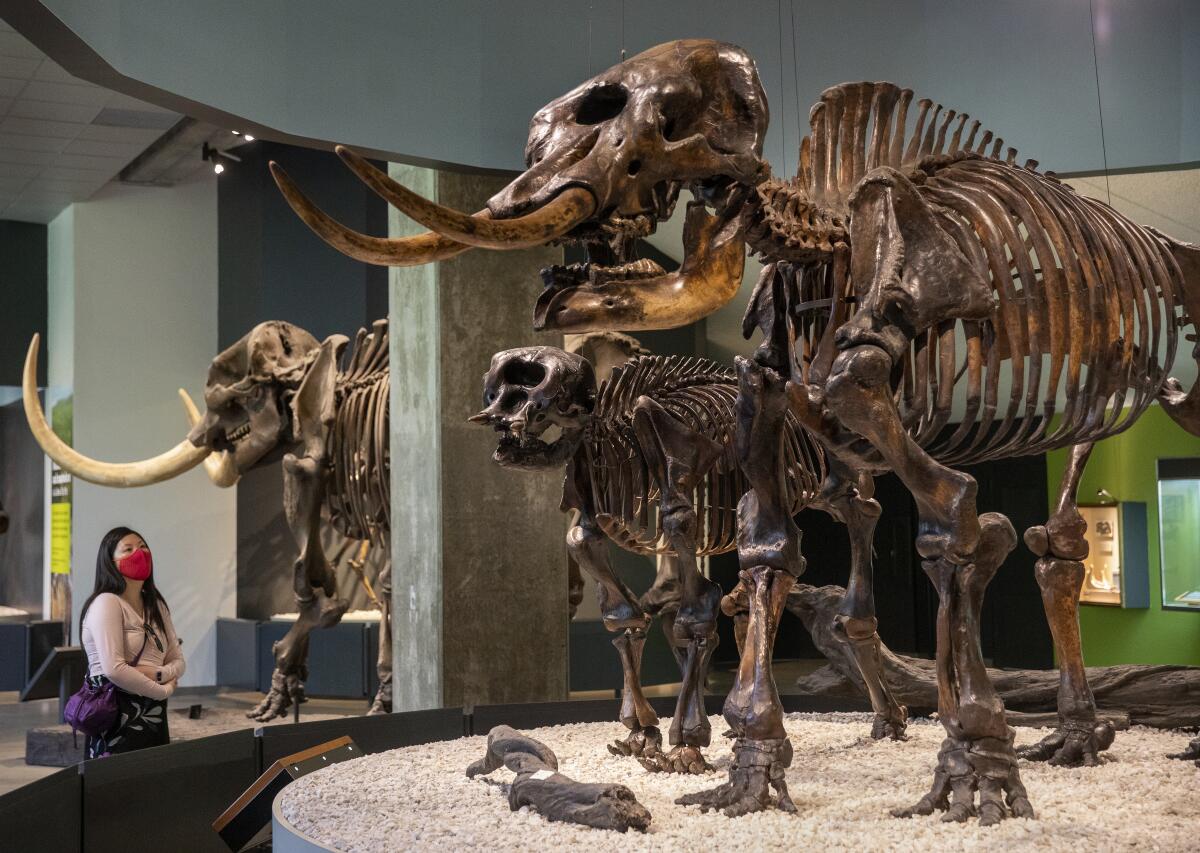
Despite the scientists’ groundbreaking findings, mysteries continue to swirl in the oozing pits.
Sometimes, Lindsey said, the things that scientists don’t find in the tar pits fascinate as much as the bones and other items they uncover.
Lindsey described puzzles posed by the tar pits that remained to be solved.
Here are three of the most tantalizing:
Why are the remains of some native species — such as mountain lions — largely missing from the tar pits?
Something odd: Scientists have uncovered relatively few mountain lion remains in the tar pits.
P-22’s Hollywood celebrity status aside, it might seem weird to worry about the absence of some mountain lion fossils when the tar pits have revealed the remains of extinct mammoths, dire wolves and giant ground sloths.
Still, it’s odd that mountain lions — which existed in the Los Angeles area during the Ice Age — make up such a small percentage of the scientists’ findings in the tar pits. The Tar Pits have remains from at least seven different mountain lions, while its saber-toothed cats number somewhere between 2,500 and 3,000.
We picked our favorite questions — now you get to choose which question we answer first.
And it’s not only mountain lions missing from the tar pits.
“We have very few mountain lions, very few deer...and only one raccoon,” she said. Aside from coyotes, scientists have found “very few of these [large mammal] ‘survivors of the Ice Age,’ which is an interesting thing.”
Why might mountain lions be missing from the tar pits?
The answer could help scientists paint a more detailed picture of what life in prehistoric Los Angeles was like.
Lindsey and her colleagues have a few ideas. Among other potential explanations, it’s possible that – true to their name – mountain lions have always preferred to be in the highlands, not the flatter areas of present-day Los Angeles near the tar pits.
Or, it might have been that mountain lions were afraid to hunt in the same areas as saber toothed cats. “A mountain lion looks like a house-cat next to a saber-toothed cat – [it’s possible] they wanted to stay away and not be around all these big scary things.”
Coyotes survived in Southern California as saber-toothed cats died out. Bones from the La Brea Tar Pits reveal that coyotes were better at adapting their diets.
Where is the evidence of human life?
Mountain lions, raccoons and deer aren’t the only mammals missing from the tar pits. There’s also a conspicuous lack of human remains.
“Humans were here, but why don’t we find any evidence of them at the La Brea Tar pits?” Lindsey asked. “We have one human skeleton, and then we have some artifacts that are probably all from the Holocene (our current geological epoch), but we have no evidence of humans overlapping with or interacting with the megafauna” via hunting.
This is puzzling, because “many — perhaps even most — scientists think that the major cause of the extinctions of the megafauna was human activity,” Lindsey explains.
Similar to the mountain lions, Lindsey notes that the absence of ancient humans could point to their reticence at hunting nearby saber-toothed cats and other dangerous animals.
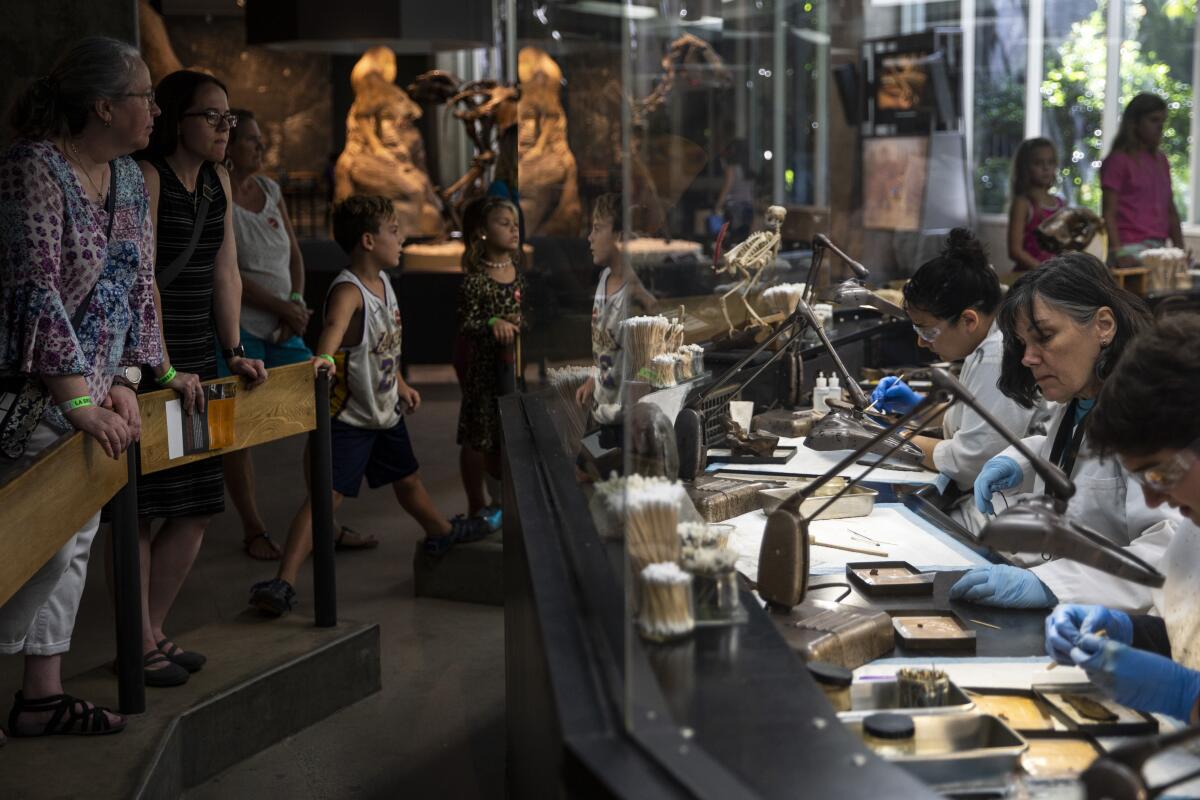
“It might have been that the culture that was here was coastally adapted and didn’t need to brave, for example, a pack of dire wolves to go hunt a horse or a camel,” she said. “They could stay near the shore and pick shellfish.”
The La Brea Tar Pits were recognized as one of the world’s First 100 IUGS Geological Heritage Sites for their stunning Ice Age fossil record.
Why did large mammals start disappearing — and what does that tell us about our future?
Once upon a time, giant mammals roamed great swaths of the earth.
“There were giant wombats in Australia, there were giant lemurs in Madagascar, there were giant sloths and armadillos in South America,” Lindsey said.
So, Lindsey asks, why don’t we have saber-toothed cats and mammoths and giant ground sloths wandering around Wilshire Boulevard today?
A dramatic change occurred. “At the end of the Ice Age, something happened, and it wiped off the top end of the body size distribution everywhere except for Africa,” she said. “That’s the biggest extinction event since the 66 million-year-ago dinosaur extinction event.”
Even more chilling, the loss of the giant mammals is coming to be recognized as “the first pulse in the biodiversity crisis that we’re in today,” she said.
Why did this extinction event happen? “Most scientists think that humans must have had a pretty significant role in this extinction. But the other thing that was happening was we were coming out of the Ice Age – the last major episode of global warming,” she said.
“Understanding kind of the interplay between climate change and human activities, how that impacts ecosystems and how those two processes can intersect to drive extinctions is incredibly important.”
The La Brea Tar Pits are positioned to help solve the mystery of why precisely the giant mammals died out, due to the size and scope of its findings, which can be radiocarbon-dated and matched with known shifts that happened simultaneously with humans and the climate.
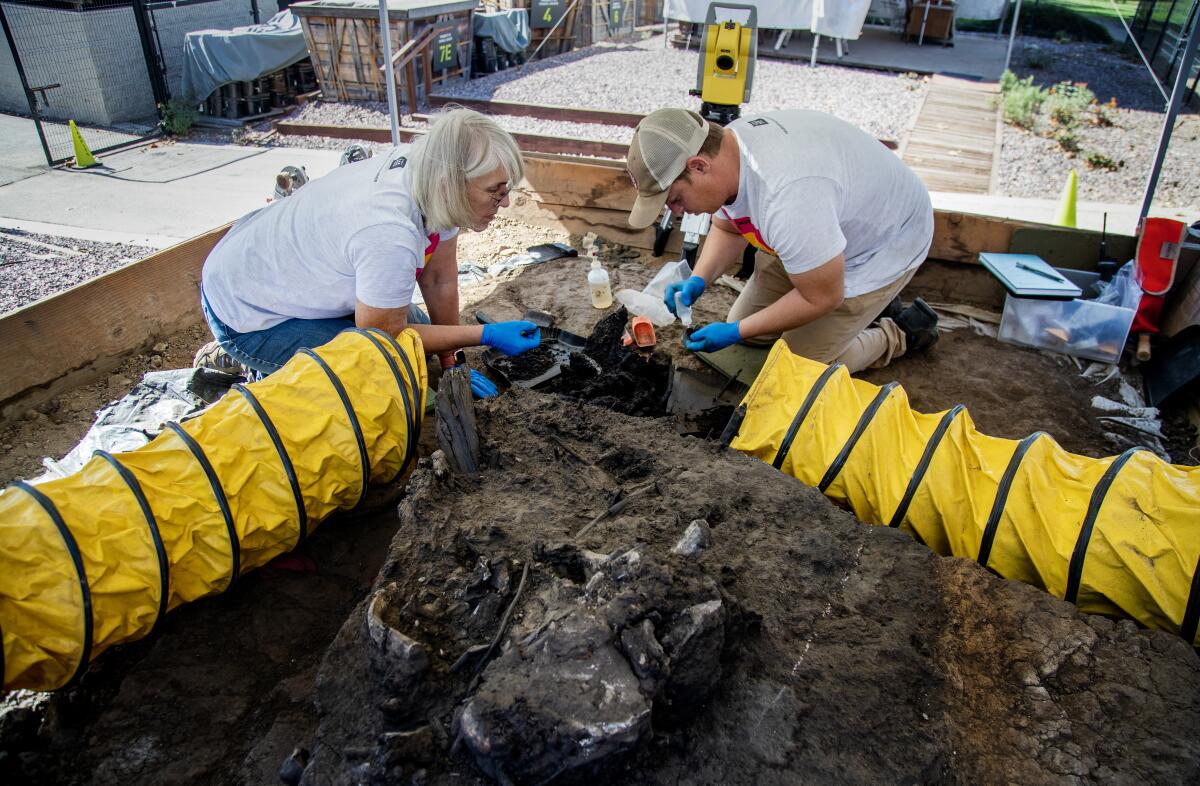
On the opposite side of the coin, 90% of the species found at the tar pits have not gone extinct. “We have tons of rabbits, rodents, lizards, insects, and songbirds in our record that still live in the L.A. area today,” Lindsey said via email.
“We’re a record of survival and resilience,” she said, which begs a few questions. “What made mountain lions successful? What made coyotes so successful? What made oak trees successful?”
As the climate crisis worsens today, the answers to these mysteries could chart a path for the future.
“The next several decades to several centuries are going to be one of really extreme global change,” Lindsey said. “How can we use that information to help life succeed going forward?”
This existential question should give you something to ponder the next time you pass the Tar Pits’ iconic (and heartrending) mammoth statues off Wilshire Boulevard.
Animals strolling here in past millenniums got stuck in the muck, but today the La Brea Tar Pits’ open-air museum is a great place to take a walk.
This story was written directly in response to a reader’s question about the La Brea Tar Pits. Do you have a question about life in Los Angeles or California? Ask us!
More to Read
Sign up for Essential California
The most important California stories and recommendations in your inbox every morning.
You may occasionally receive promotional content from the Los Angeles Times.


